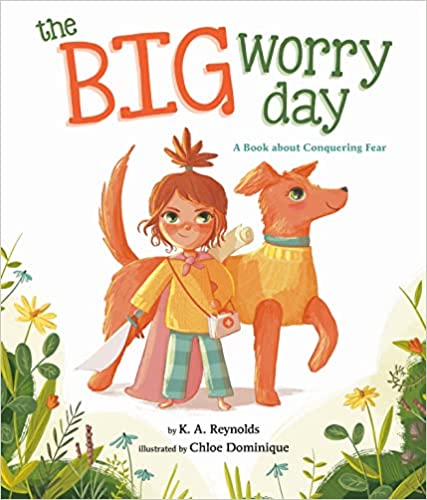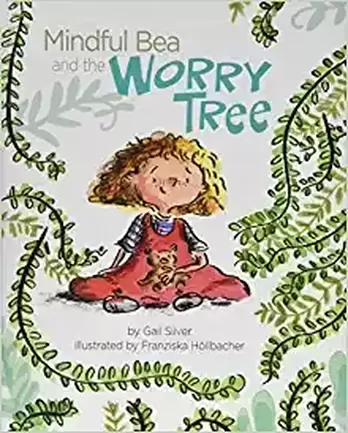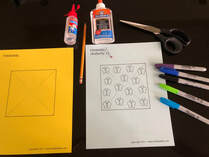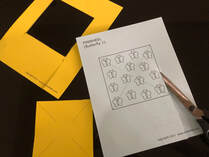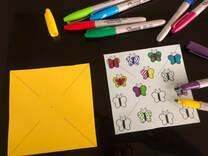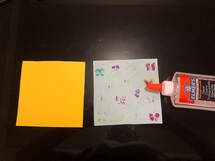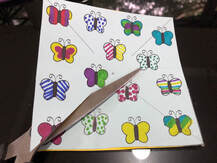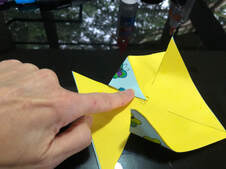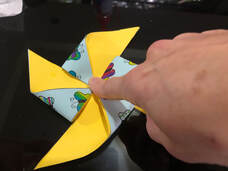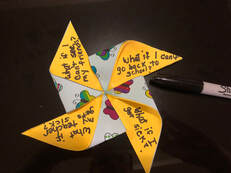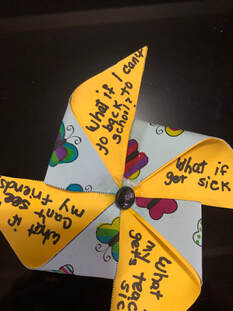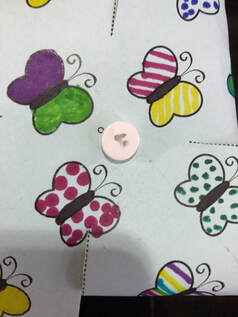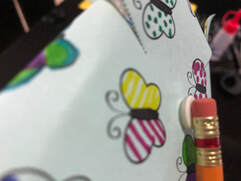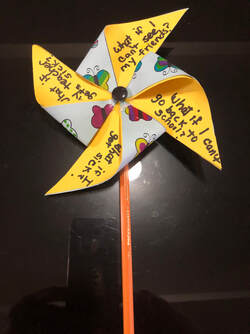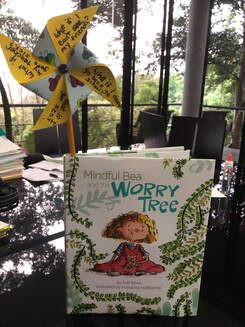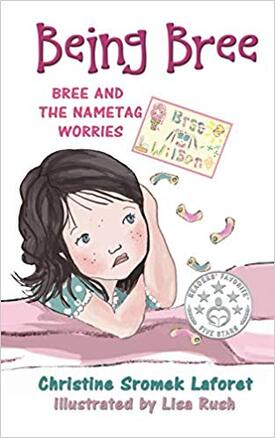A Book Review of The Big Worry DayThis month I teamed up with A Novel Mind website and created a guest post for their blog! It features the amazing book, The Big Worry Day, written by K.A. Reynolds and illustrated by Chloe Dominique. This book presents an insightful and authentic representation of childhood anxiety and is chockfull of coping strategies! As always, I have included an activity to go along with the book. Check it out HERE!
0 Comments
A Book Review of Mindful Bea and the Worry Tree
Pandemic panic aside, anxiety disorders are the most common psychological issue among children. Anxiety has been on the rise in our society for many years. Anxiety and worry are a normal part of childhood, but it can become more severe in some children. This book, Mindful Bea and the Worry Tree, is excellent for children within the whole spectrum of anxiety, from everyday worries to severe disturbances. This book will help children name and understand their feelings of anxiety as well as learn to cope with it. The author, Gail Silver, utilizes a tree as an analogy for anxiety, with beautiful writing as follows: "like a seed from underground, it sprouts alive, unleashed, unbound. With knarled roots, this kind of tree feeds on thoughts ..." The story begins as Bea, in anticipation of her birthday party, is bombarded with thoughts of "What if ..." "What if nobody comes? What if we didn't bake enough cake?" These "what if ..." questions are very common in all of our thoughts when anxiety starts to take hold. Through Bea, Ms. Silver does a thorough job in describing the physical sensations in our bodies when we are feeling anxious. This is an important step in helping children recognize and name their feelings, which is crucial to coping. She then takes children through a meditation process, including deep breathing and slowing down thoughts in order to choose what to think about. Repetition of words is used in the text to show Bea slowly calming herself down and quieting her irrational thoughts as she is employing her coping skills. Franziska Hollbacher, the illustrator, follows the mood of the story beautifully through her illustrations. Initially the vines of the tree are taking over. Slowly these vines recede and the illustrations become more and more calm and then full of fun energy as the birthday party begins. This book includes a Note to Parents, written by a psychologist, which includes helpful information on how to use this book, information on understanding anxiety in children, how parents can help, and when to seek professional help. I strongly recommend this book for all children ages 4-8, whether struggling with temporary, everyday worries or with an ongoing anxiety disorder. Check out other books on emotions by Gail Silver at https://gailsilver.com/books-and-more/. I have included additional resources below and an activity to further help your child with their worries and anxieties. Activity and Resources for Mindful Bea and the Worry TreeBelly breathing is the most important skill to acquire and not easy to teach young children - here are a couple of links to videos to help teach belly breathing to kids https://www.youtube.com/watch?v=VOnDA6_MAWI https://www.youtube.com/watch? Relaxation/Meditation/Mindfulness - an abundance of apps are available on Iphone or Ipad with meditation/mindfulness exercises for kids. A few of the higher rated apps are: Stop, Breathe and Think Kids Breathe, Think, Do with Sesame Street (for the younger crowd) Calm (has a specialized kid's section) Activity Materials needed: pinwheel template https://www.firstpalette.com/printable/pinwheel.html Paper (cardstock works best)can use colored paper or white unused pencil with eraser push pin or tack scissors crayons or markers black marker glue -strong glue is helpful bead or small button
A Book Review of Being Bree |
| Being Bree Bree and the Nametag Worries Written by Christine Sromek Laforet Illustrations by Lisa Rush Publisher: Clear Fork Publishing This month I'm moving into a slightly older age-group and reviewing a Chapter Book/Early Reader appropriate for ages 6-10. Through this book, Christine Laforet covers a lot of ground. Besides simply being an enjoyable read for a youngster, this book addresses a host of childhood issues, especially related to the school experience. I highly recommend this book for all children within this age range. |
Although the main focus of this book is anxiety, it addresses the ancillary problems associated with academic giftedness. Additionally, Ms. Laforet touches on issues of making friends, social skills, experiencing intense feelings, impulsive behaviors and issues with self-control. Therefore, it is appropriate for a wide range of children. It is also a helpful read to increase empathy for children who do not experience these particular problems. Incorporated within the story, Ms. Laforet presents many age-appropriate coping strategies that are useful for all children, as well as adults. This book is up-to-the-minute regarding experiences of kids in today's world, i.e. cell phones and video chats. She uses humor throughout the book that makes it fun to read.
Bree is a bright, academically gifted girl with a propensity for anxiety. Her thoughts tend to run wild when she is faced with situations that are difficult for her. The plot of the book revolves around a school project for the first day of school, in which Bree is required to create a nametag showing her interests. This activity raises her anxiety about making friends as she begins to think about the upcoming school year. Bree tends to have poor boundaries with peers and can be annoying to others as she tries too hard to fit in. Based on these issues, Bree remembers how she has had difficulty fitting in with peers and the "What if..." questions start to take over her thinking.
Throughout the story, Bree experiences many failures related to making friends which further heightens her anxiety. She loses her nametag and is forced to make friends without it, a feat Bree thinks is impossible. She models for the reader strategies for calming herself down and controlling her emotions. Ms Laforet weaves these strategies into the story well so that they do not appear preachy. By the end of the book, Bree has learned some social lessons and does make friends.
Ms. Laforet does an excellent job opening the door to Bree's thoughts and feelings, allowing the reader to empathize with her. Through the illustrations, Lisa Rush creatively brings Bree's spunky and intense personality to life.
At the end of the book, Ms. Laforet lists the coping strategies modeled throughout the book. These include:
1. How to Take a Belly Breath
2. Steps to Calming Down
In the calming down steps, many strategies are mentioned including doing an action to distract from the thoughts, naming your feeling(s), counting, belly breathing, using positive self-talk.
Anxiety among children has become more prevalent over time and affects approximately 1 in 8 children ages 3-17. It is fairly common for children with anxiety to also experience behavioral problems and/or depression. For more severe forms of anxiety, therapy is recommended. Cognitive Behavioral Therapy can be especially helpful. Sometimes medication is necessary. For milder forms of anxiety, there are many strategies that can be used at home, in therapy, or in the classroom that can be especially helpful. Below is a list of activity ideas.
Being Bree: Bree and the Nametag Worries is the first book in the Being Bree series. Book 2 is currently available and Book 3 will be released soon. For more information, check out the author's website at www.christinesromeklaforet.com.
Bree is a bright, academically gifted girl with a propensity for anxiety. Her thoughts tend to run wild when she is faced with situations that are difficult for her. The plot of the book revolves around a school project for the first day of school, in which Bree is required to create a nametag showing her interests. This activity raises her anxiety about making friends as she begins to think about the upcoming school year. Bree tends to have poor boundaries with peers and can be annoying to others as she tries too hard to fit in. Based on these issues, Bree remembers how she has had difficulty fitting in with peers and the "What if..." questions start to take over her thinking.
Throughout the story, Bree experiences many failures related to making friends which further heightens her anxiety. She loses her nametag and is forced to make friends without it, a feat Bree thinks is impossible. She models for the reader strategies for calming herself down and controlling her emotions. Ms Laforet weaves these strategies into the story well so that they do not appear preachy. By the end of the book, Bree has learned some social lessons and does make friends.
Ms. Laforet does an excellent job opening the door to Bree's thoughts and feelings, allowing the reader to empathize with her. Through the illustrations, Lisa Rush creatively brings Bree's spunky and intense personality to life.
At the end of the book, Ms. Laforet lists the coping strategies modeled throughout the book. These include:
1. How to Take a Belly Breath
2. Steps to Calming Down
In the calming down steps, many strategies are mentioned including doing an action to distract from the thoughts, naming your feeling(s), counting, belly breathing, using positive self-talk.
Anxiety among children has become more prevalent over time and affects approximately 1 in 8 children ages 3-17. It is fairly common for children with anxiety to also experience behavioral problems and/or depression. For more severe forms of anxiety, therapy is recommended. Cognitive Behavioral Therapy can be especially helpful. Sometimes medication is necessary. For milder forms of anxiety, there are many strategies that can be used at home, in therapy, or in the classroom that can be especially helpful. Below is a list of activity ideas.
Being Bree: Bree and the Nametag Worries is the first book in the Being Bree series. Book 2 is currently available and Book 3 will be released soon. For more information, check out the author's website at www.christinesromeklaforet.com.
Activities Ideas for Being Bree
Bree and the Nametag Worries
All kids, like adults, feel worried and anxious from time to time. Sometimes, kids suffer from more chronic, severe anxiety that requires treatment. In addition to the strategies modeled in Being Bree, these activities can be helpful for all children to minimize anxiety and worries.
1. Belly breathing is the most important skill to acquire - here are a couple of links to videos to help teach belly breathing to kids
https://www.youtube.com/watch?v=VOnDA6_MAWI
https://www.youtube.com/watch?v=_mZbzDOpylA
2. Yoga - several DVDs are available for kid's yoga and many more kid's yoga classes are being offered in the community. A few of the higher rated DVDs are:
Storyland Yoga: Yoga for Kids and Families (ages 3-8)
Once Upon a Mat (ages 2.5+)
Yoga Motion (ages 2.5+)
3. Relaxation/Meditation/Mindfulness - an abundance of apps are available on Iphone or Ipad with meditation/mindfulness exercises for kids. A few of the higher rated apps are:
Stop, Breathe and Think Kids
Breathe, Think, Do with Sesame Street (for the younger crowd)
Calm (has a specialized kid's section)
Headspace (Has a specialized kid's section)
4. Exercise - rigorous exercise when the child is feeling anxious is very helpful
5. Journaling - if the child is old enough, writing out feelings and worries can be very therapeutic. "Get it out of your head and onto the paper" is one of my favorite lines for kids with many worries/anxieties.
- A very helpful journaling activity that I strongly recommend is to keep a small notepad and pen next to the child's bed. Before bed or anytime, the child can write their worries, feelings, or concerns that they want to share. The child gives the notepad to a parent in the morning and the parent, in turn, writes back to the child with reassuring statements or acknowledgement of feelings, etc. The parent then places the notepad next to the child's bed again before bedtime and the process is repeated daily or as often as possible. This not only helps the child 'get it out of their head and onto the paper', it helps the parent stay in touch with the feelings of their child. The writing practice doesn't hurt either!
Thanks for reading my blog. Feel free to leave me a comment below and let me know what you think.
1. Belly breathing is the most important skill to acquire - here are a couple of links to videos to help teach belly breathing to kids
https://www.youtube.com/watch?v=VOnDA6_MAWI
https://www.youtube.com/watch?v=_mZbzDOpylA
2. Yoga - several DVDs are available for kid's yoga and many more kid's yoga classes are being offered in the community. A few of the higher rated DVDs are:
Storyland Yoga: Yoga for Kids and Families (ages 3-8)
Once Upon a Mat (ages 2.5+)
Yoga Motion (ages 2.5+)
3. Relaxation/Meditation/Mindfulness - an abundance of apps are available on Iphone or Ipad with meditation/mindfulness exercises for kids. A few of the higher rated apps are:
Stop, Breathe and Think Kids
Breathe, Think, Do with Sesame Street (for the younger crowd)
Calm (has a specialized kid's section)
Headspace (Has a specialized kid's section)
4. Exercise - rigorous exercise when the child is feeling anxious is very helpful
5. Journaling - if the child is old enough, writing out feelings and worries can be very therapeutic. "Get it out of your head and onto the paper" is one of my favorite lines for kids with many worries/anxieties.
- A very helpful journaling activity that I strongly recommend is to keep a small notepad and pen next to the child's bed. Before bed or anytime, the child can write their worries, feelings, or concerns that they want to share. The child gives the notepad to a parent in the morning and the parent, in turn, writes back to the child with reassuring statements or acknowledgement of feelings, etc. The parent then places the notepad next to the child's bed again before bedtime and the process is repeated daily or as often as possible. This not only helps the child 'get it out of their head and onto the paper', it helps the parent stay in touch with the feelings of their child. The writing practice doesn't hurt either!
Thanks for reading my blog. Feel free to leave me a comment below and let me know what you think.
Follow me on Twitter, Pinterest and LinkedIn
Categories
All
Absent Dad
Acceptance & Commitment -Therapy Skills
Acceptance Of Others
ADHD
Adoption
Anger Management
Anxiety
Body Autonomy
Cognitive Behavioral Therapy Skills
Consent
Coping With ADHD
Coping With Depression
Coping With Feelings
Depression
Disability Awareness
Disappointment
Divorce
Domestic Violence
Empathy
Fear
Feelings General
Feelings-General
Foster Care
Gender Identity
Giftedness
Grandparents As Guardians
Grief & Loss
Growth Mindset
Incarcerated Parent
Kindness
Kinship Care
Learning Disabilities
Making Friends
Mindfulness
Negative Self Talk
Parental Anger
Parental Arguing
Parent W/Mental Illness
Parent W/Substance Abuse
Racial Injustice
School Lockdown Drills
Seizures
Self Esteem
Sensory Issues
Separation Anxiety
Sexual Abuse
Sexual Abuse Prevention
Shyness
Standing Up For Others
Suicide
Supporting A Friend
Temper Tantrums
Terminal Illness
Trauma
White Privilege
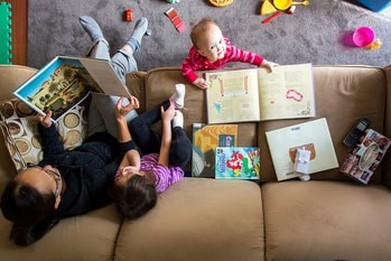
 RSS Feed
RSS Feed
